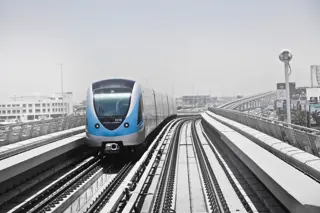Chandigarh-Zirakpur Metro Phase 1: A Beacon of Connectivity
 Latest updatesReal estate investors and residents in Chandigarh, Mohali, and Panchkula are excited about the progress of Phase 1 of the Zirakpur-Chandigarh Metro project. This ambitious ₹24,000 crore infrastructure initiative promises to revolutionize intra-city mobility while opening new avenues for property development.
Latest updatesReal estate investors and residents in Chandigarh, Mohali, and Panchkula are excited about the progress of Phase 1 of the Zirakpur-Chandigarh Metro project. This ambitious ₹24,000 crore infrastructure initiative promises to revolutionize intra-city mobility while opening new avenues for property development.
Core Routes & Strategic Connectors
Phase 1 focuses on three main corridors:
- Sukhna Lake, Zirakpur ISBT: A 41.20 km elevated and underground hybrid route passing through Mohali ISBT and Chandigarh Airport.
- Sultanpur, New Chandigarh, Sector 28, Panchkula: A 34 km stretch linking residential and commercial hubs of Panchkula.
- Grain Market Chowk, Transport Chowk: A 13.30 km urban route addressing last-mile connectivity in central Chandigarh, accompanied by a 2.5 km depot entry line.
Key infrastructure highlights include:
- 16.5 km underground sections preserving Chandigarh’s iconic heritage sectors from Sector 1 to Sector 33.
- Elevated tracks in Mohali to minimize land acquisition challenges and maintain existing terrain flow.
- Integration with ISBT terminals at Mohali and Zirakpur, set to become multi-modal hubs.
Economic & Real Estate Implications
The project positions Zirakpur as a prime investment hotspot. Proximity to Metro stations could boost property values along the Sukhna Lake-Zirakpur corridor, attract professionals and investors. Commercial spaces near ISBT Mohali and Chandigarh Airport may see heightened demand due to enhanced accessibility.
Implementation Timeline & Challenges
- Phase 1 Completion: Targeted by 2032, starting with elevated sections to expedite service.
- Utility Relocation: Incorporated into capital expenditure to streamline construction, as confirmed by RITES.
- Phase 2 Expansion: Post-2034 plans include a 25 km loop from Airport Chowk to Pinjore via ISBT Zirakpur, focusing on elevated infrastructure.
The Haryana and Punjab governments remain pivotal stakeholders, coordinating with RITES (Rail India Technical and Economic Services) to ensure technical compliance and cost efficiency. As construction progresses, this Metro network could redefine Tricity’s urban landscape, merging modern transit with architectural heritage.